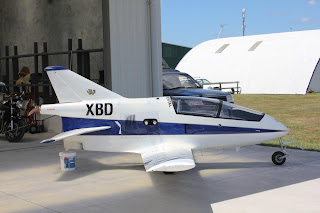.jpg)
Eagle Air is working to reduce the number of flight cancellations at Blenheim airport, Air New Zealand says. A flight out of Blenheim to Wellington was cancelled on Sunday, affecting several people who had been in Blenheim for the wine and food festival at the weekend. Eagle Air is the Air NZ subsidiary that operates flights to Blenheim. Air New Zealand spokeswoman Tracey Palmer said the flight had been cancelled because of crew sickness. Eagle Air had cancelled 3.9 per cent of its scheduled services into and out of Blenheim during the past two months, because weather affecting the network around the country, higher-than-usual crew sickness and engineering requirements, she said. "This percentage is higher than we'd like and the Eagle Air team is working hard to reduce that." Aviation sources said there was a shortage of the Beechcraft 1900D planes that served Blenheim because five were out of action having their engines replaced. However, Ms Palmer said only one Beechcraft was on the ground for scheduled maintenance, which included planned engine replacement. It was expected to be back in service in a week. The engines on other planes had been also been replaced during the past few months. Pratt and Whitney, which makes the engines for the Beechcraft, announced yesterday at the Singapore Aviation Show that it had signed a 60+ Engine Fleet Enhancement Programme agreement with Air New Zealand, which would carry out a "new for old" engine exchange programme on all Pratt and Whitney engines in the airline's Beech 1900D and ATR72-500 planes. The engines go back to Pratt and Whitney in Canada. "For operators like Air New Zealand, a fleet enhancement programme is a cost-effective alternative to the option of overhauling high-time engines," a Pratt and Whitney spokesman said. There were benefits to the operator with such a replacement programme, including having a factory-fresh engine that featured the latest in technology and a standard new-engine warranty. Ms Palmer said Air NZ had a limited ability to do anything about the weather, but was working to boost key maintenance engineering ability during the day. Most Beechcraft maintenance is done in Hamilton at night. It had also adjusted the timings of some regional services as part of its regular scheduling programme.
.jpg)



.jpg)









.jpg)





.jpg)







.jpg)
.jpg)

.jpg)
.jpg)
.jpg)
.jpg)
.jpg)


.jpg)
.jpg)








